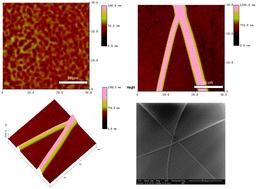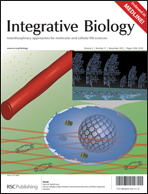Substrate curvature sensing through Myosin IIa upregulates early osteogenesis
Abstract
Topographical cues mimicking the extracellular matrix (ECM) have demonstrated control over a diverse range of cellular behaviours including: initial adhesion, migration, cell growth, differentiation and death. How cells sense, and in turn translate, the topographical cues remains to be answered, but likely involves interactions through interfacial forces that influence cytoskeletal structure and integrin clustering, leading to the downstream activity of intracellular signalling cascades. Electrospun fibers have shown significant success as a biomimetic topography for bone tissue engineering applications, but mechanisms by which osteoprogenitor cells translate the fiber geometry into intracellular signalling activity is only recently being examined. We hypothesized that increased cellular differentiation observed on fibrous topography is due to acto-myosin contractility and cellular stiffness via the small GTPase RhoA. In order to evaluate this hypothesis, MC3T3-E1 osteoprogenitor cells were grown on poly(methyl methacrylate) (PMMA) fibers of 1.153 ± 0.310 μm diameter. The elastic modulus of the cell surface was measured by atomic force microscopy (AFM) with a colloidal probe. Overall cellular stiffness was found to increase more than three-fold in osteoprogenitors adhered to a fiber, as opposed to those grown on a flat substrate. Pharmacological inhibition of RhoA signalling activity decreased cellular stiffness and cytoskeletal integrity of osteoprogenitors growing on fibrous substrates. Finally, we demonstrated not only RhoA activity through its effector Rho-associated coiled coil kinase II (ROCKII), but also Myosin IIa promotes early osteogenic differentiation, as shown by alkaline phosphatase (ALP) staining. Previous studies have demonstrated the importance of ROCKII on early differentiation. Our results shed light on mechanisms underlying geometry sensing by highlighting the role of Myosin IIa in addition to ROCKII and could ultimately contribute to scaffold design strategies.


 Please wait while we load your content...
Please wait while we load your content...